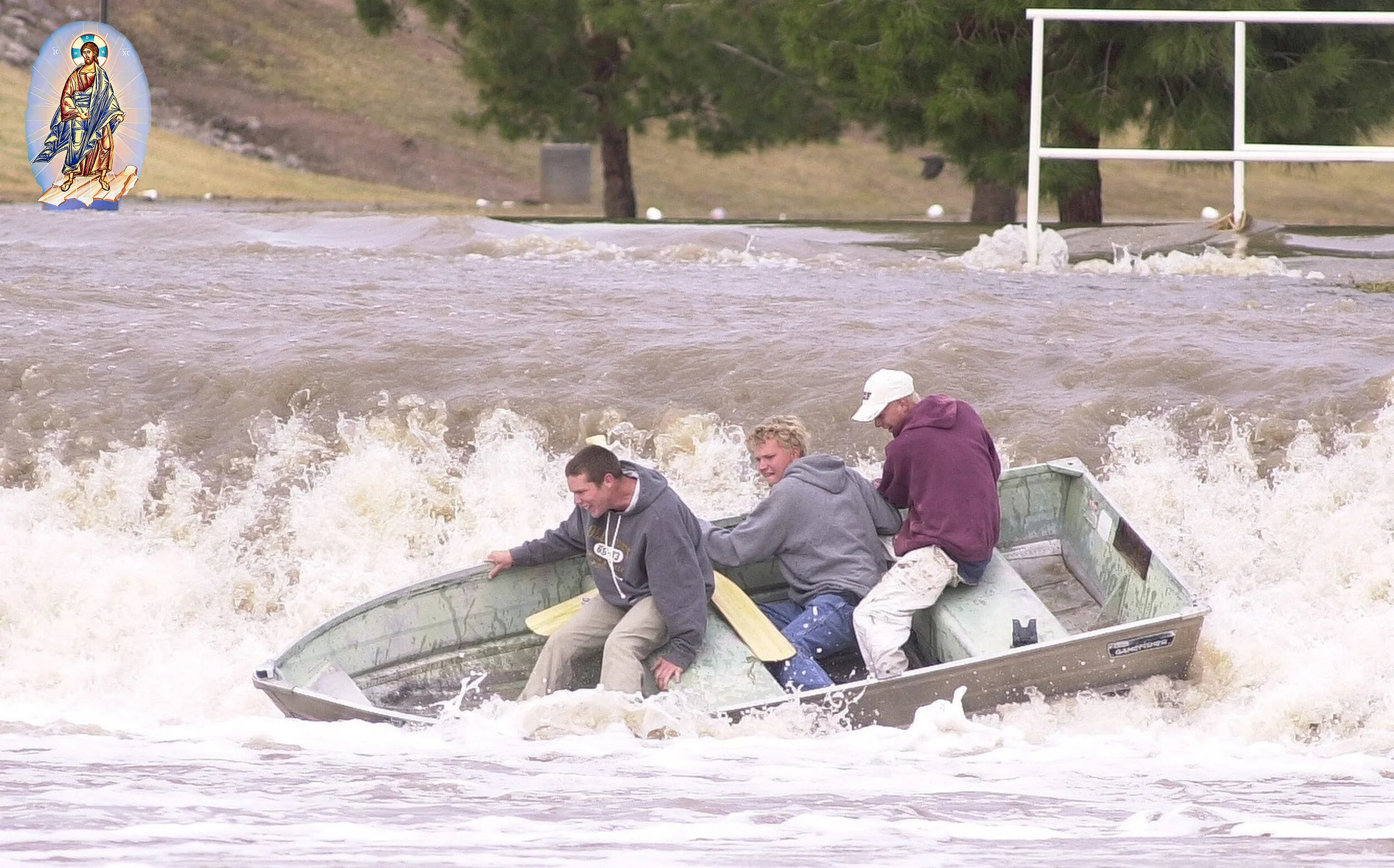by Fr Gabriel-Allan Boyd
This Sunday, we begin the Triodian. The Triodian involves three specific Sunday Gospel Readings that lead us into the beginning of our 40-day Lent (the Pharisee & Tax Collector; the Prodigal Son; and the Great Judgment on Love), preparing our hearts to engage the journey ahead. Many have described the Lenten Season as “a School of Repentance.” Yet, there’s a problem with the way that some people think of repentance. They think it’s just about beating yourself up over some wrong that you’ve done in breaking God’s laws. If that were the singular way we approached Lent, it would be a very dark and depressing thing. Yet the Church has not only referred to Lent as “a School of Repentance,” but also as a time of “Bright-Sadness,” and “Joyful-Sorrow.” But what does that mean? What is sin and repentance anyway? Is it really possible to find Brightness and Joy in this School of Repentance?
The typical view of sin is that it’s primarily a matter of breaking scriptural laws that God laid out for us. For many Protestant and Roman Catholics around us (and even for some misguided Orthodox), right relationship with God is based solely on rigorous obedience to all of God’s laws. But when relationship with God is based on a strict adherence to laws, it sadly misses how relationships work and it overlooks the spirit of the laws that God lays out for us.
Orthodox Christianity’s approach to this subject is more holistic. The Greek word for sin is hamartía (ἁμαρτία), which literally means, “missing the mark.” It’s as though someone is shooting arrows at a target and keeps missing (or falling short of) the bullseye. Now, if sin is “missing the mark,” then it begs the question, “What’s the mark?” What are we Christians supposed to be shooting for anyway? For many in the Christian west (the bullseye) is obeying all the scriptural laws…but for Orthodox Christians, it’s something more holistic…more organic. And the mystery of the disparity between the Christian East and West might be revealed in the distinctive emphasis they and us would put on a particular passage of scripture, Romans 3:23, “For all have sinned and fallen short of the glory of God.” For Protestants and Catholics, the emphasis is on the first half of that verse, “all have sinned.” However, for Orthodox Christians, the emphasis is on the second half of that verse, “the glory of God.” You see, that’s the part of the verse that reveals the meaning of sin…the part that unveils the bullseye we’re missing. What we’re shooting for is the “glory of God.” Except, that also might be a little too abstract for us…because, what exactly is “the glory of God” anyway?
From the very beginning, humanity was created in God’s image, to grow in His likeness…to grow in union with God’s will and in harmony with His loving care for creation around us, to bear forth fruit, and to have stewardship over all of creation (Genesis 1:26-30). Yet, our first parents, Adam & Eve, failed in this divinely given mission (Genesis 3:1-24). Later, God gave a set of commandments to His people, Israel, to clarify for them what it meant to be unified with Him in His likeness. Still later, in the Gospels, Jesus clarified even further what God desired from us, “to love God with all our heart, soul strength and mind…and to love our neighbor as ourselves.” He said that all the law and all the prophets hang upon these two expressions of love (Matthew 22:40). Christ, Himself is the very fulfillment of those two expressions of love (Matthew 5:17-20). Therefore, the “glory of God” is always seen where Christ and His Body, the Church, are fulfilling those two offerings of love (Acts 7:55; 2 Corinthians 4:6; Philippians 2:11). That’s “the mark.”
Along those same lines, in his letter to the Hebrews (12:2), Saint Paul, tells us what to put within our sights as we take aim for the mark (the bullseye): “Looking away from everything that will distract us, let us fix our eyes upon Jesus, the cause and the completion of our faith…” Throughout the rest of Hebrews 12, Saint Paul shows us what it looks like when Christ self-sacrificially pours Himself out on behalf of His beloved creation.
So, if “sin” is “missing the mark,” we find “the mark” (the bullseye) we’re supposed to be aiming at by aiming towards unity with Christ’s likeness and by unifying ourselves with His will for creation. The bullseye is our growing, more and more, into unity with our Lord’s self-emptying love, for the sake of the other members of the Trinity, and our growing in tangible participation with Jesus’ self-sacrificial love for our neighbor. This isn’t about merely saying that we love God with all our heart, soul, strength and mind; nor merely a verbal assent that we love our neighbor as our self, but rather, it’s revealed in our physical acts of those two expressions of love. That’s why Saint Paul tells the Corinthian Church, “Whether you eat or drink, or whatever you do, do all to the glory of God.”
A good metaphor for how sin and repentance work in our life is, trying to row a boat across a swollen river after a rain-storm. We look across the water to the other side looking for our mark—our target—unity with Jesus Christ, and we begin rowing across. But the strong current of what life rains down upon us, pulling us toward countless other things—like our own spiritual laziness, recreation, food, sex, chasing after money and possessions, and other cares of life—are constantly pulling our direction off course, sweeping us away, if we’re not careful. So, we have to re-focus our attention upon our intended landmark, our true rest, Jesus Christ—the cause and the completion of our faith…and then we have to make constant adjustments to the direction we’re rowing, as we fight that current.
So, what happens if we just give up…choosing not to row, and we let the currents of life and our own bodily desires overtake us? Chaos begins to *rule* our lives. The more we let it take over, the more we become its slaves. Most of us are already feeling the effects of lives lived this way. You know, that’s not a direction that’s ultimately to your benefit, or to the benefit of your family. You can’t continue that way and end up in a place that your family and the other loved ones around you need you to be.
That brings us to Lent. It’s a lot of extra services, and a focus on our identifying in confession the ways we fall short of Christ-likeness, changing our diet, our prayer life and our attention towards helping those in need—and on replacing our self-absorption with tangible acts of love for God and our neighbor. But, do we really need to add even one more thing to our busy lives? Through Lent, the Church offers us tools to help keep our eyes focused (in the midst of life’s storms) on the landing target we need so badly—the love of Jesus Christ expressed through us—and it gives us the benefit of brothers and sisters together in a bigger boat (the ark of salvation) working jointly in repentance (adjusting our aim), so that it’s not so overwhelming. After all, doing this alone practically insures you’ll be swept away, but doing it in a boat full of other people with the same goal, rowing with all their might to get to our common desired target, is what Jesus had in mind. After all, no one is saved alone…but rather, we’re saved in communion with each other. This is why Lent so emphasizes our need for the sacrament of confession, so that we can name out loud, the ways we’ve gone off course, and commit to adjusting our aim back to unity our Lord’s will for us. You don’t want to be a slave to the chaos that’s pulling you and your family’s lives apart, do you? Then commit to engaging in Lent with your brothers and sisters in Christ. Make an appointment to go to confession, and then participating with the ascetic tools that Lent gives us, adjusting your aim to the joy of Christ’s bright glory.



